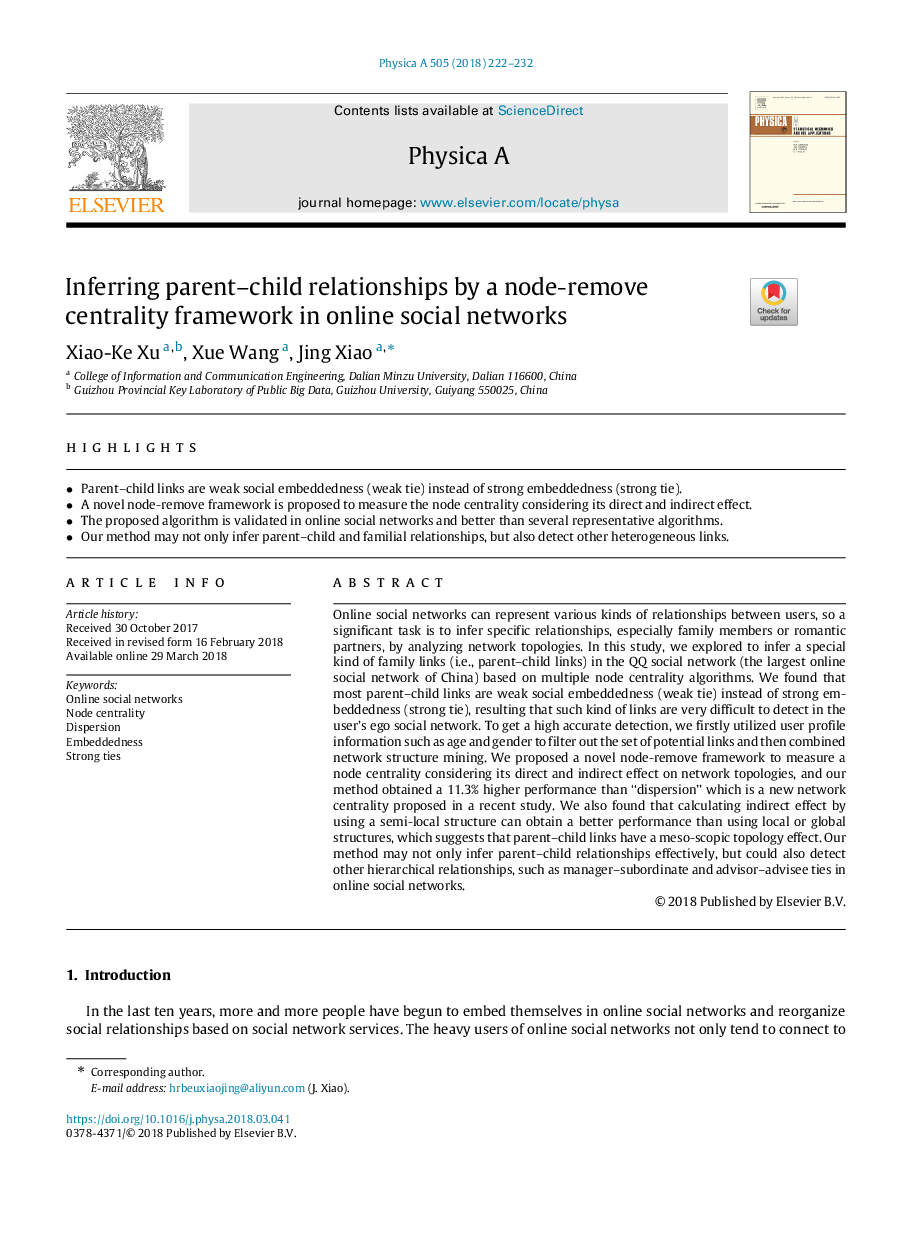| Article ID | Journal | Published Year | Pages | File Type |
|---|---|---|---|---|
| 7375458 | Physica A: Statistical Mechanics and its Applications | 2018 | 11 Pages |
Abstract
Online social networks can represent various kinds of relationships between users, so a significant task is to infer specific relationships, especially family members or romantic partners, by analyzing network topologies. In this study, we explored to infer a special kind of family links (i.e., parent-child links) in the QQ social network (the largest online social network of China) based on multiple node centrality algorithms. We found that most parent-child links are weak social embeddedness (weak tie) instead of strong embeddedness (strong tie), resulting that such kind of links are very difficult to detect in the user's ego social network. To get a high accurate detection, we firstly utilized user profile information such as age and gender to filter out the set of potential links and then combined network structure mining. We proposed a novel node-remove framework to measure a node centrality considering its direct and indirect effect on network topologies, and our method obtained a 11.3% higher performance than “dispersion” which is a new network centrality proposed in a recent study. We also found that calculating indirect effect by using a semi-local structure can obtain a better performance than using local or global structures, which suggests that parent-child links have a meso-scopic topology effect. Our method may not only infer parent-child relationships effectively, but could also detect other hierarchical relationships, such as manager-subordinate and advisor-advisee ties in online social networks.
Related Topics
Physical Sciences and Engineering
Mathematics
Mathematical Physics
Authors
Xiao-Ke Xu, Xue Wang, Jing Xiao,
